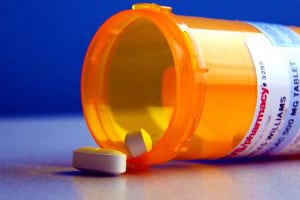
Though the proportion of people reporting use of prescription opioids for reasons other than medical necessity fell between 2003 and 2013, overdose deaths increased, according to a new study. Lead author Dr. Beth Han of the Substance Abuse and Mental Health Services Administration said, “The results underscore the importance of addressing the prescription opioid crisis,” […]

Prescription Opioid Misuse and Deaths Increase
Though the proportion of people reporting use of prescription opioids for reasons other than medical necessity fell between 2003 and 2013, overdose deaths increased, according to a new study.
Lead author Dr. Beth Han of the Substance Abuse and Mental Health Services Administration said, “The results underscore the importance of addressing the prescription opioid crisis,” Reuters reports. The study was published in the Journal of the American Medical Association.
The researchers used survey data from 472,000 people who reported their nonmedical use and use disorders related to opioids between 2003 and 2012, as well as national statistics on cause of death during that period, Reuters reports. The rate of nonmedical use of opioids – not using a prescription as directed, or using a prescription that was written for someone else – fell from 5.4 to 4.9 percent over the 10-year period, but during the same time, the rate of use disorders rose from 0.6 to 0.9 percent. The number of people reporting opioid use for more than 200 days also increased, Reuters reports.
The researchers say the increase in use disorders and misuse suggests “more patients are experiencing an inexorable progression from initial opioid use to frequent use,” according to Reuters.
Drug overdose deaths involving prescription opioids increased from 4.5 to 7.8 per 100,000 people, according to national vital statistics. The fraction of opioid users with a use disorder also increased between 2003 and 2013, from 12.7 to 16.9 percent.
Effective training programs are needed to help doctors identify and treat high-risk nonmedical users of prescription opioids, Han said. SAHMSA developed an Opioid Overdose Prevention Toolkit that provides guidance on reducing the risk of death from opioid-related overdose. The toolkit “offers ways that medical providers, people who use opioids nonmedically, and others can recognize the signs of an overdose and effectively reverse it with naloxone (a lifesaving opioid overdose drug),” she said.
In a research letter in the same issue of JAMA, other researchers said that from 2004 to 2013, use of treatment options for opioid use disorders, in inpatient, outpatient, hospital, office, emergency room, jail or self-help center settings, did not change relative to the number of opioid users. “Not everybody is going to want or need the same treatment,” said Brendan Saloner of the Johns Hopkins Bloomberg School of Public Health in Baltimore, who coauthored the research letter. Access to medications like methadone is important: opioid addiction is a chronic condition, like diabetes, and medication can help manage it, Saloner told Reuters Health.
“The last decade has been a time of rapidly growing numbers of people dying from opioid overdoses,” Saloner said, adding that “the ability of the health system to detect and provide timely access to treatment does not seem to be improving much.”
“There still are 17 states that don’t cover methadone maintenance” under Medicaid, despite the fact that methadone maintenance has the strongest evidence base of increasing recovery rates, he said.
.


